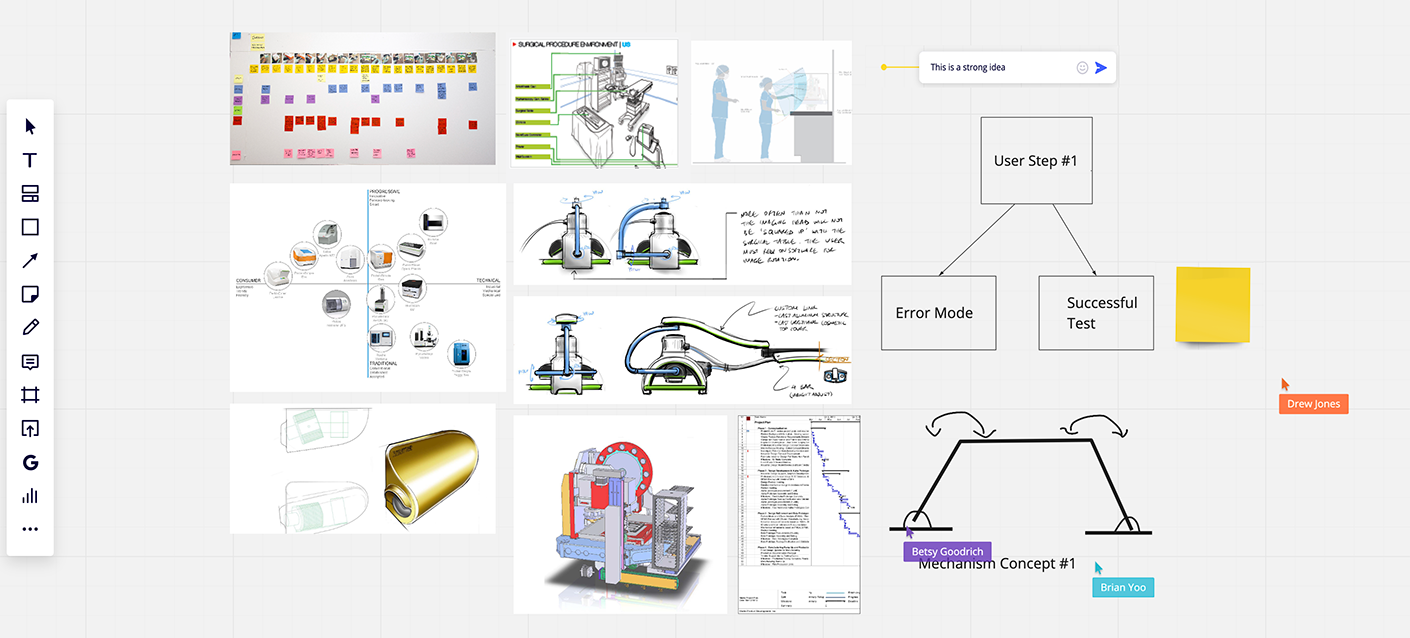6 Best Practices for Managing Remote Product Development
COVID-19 has changed our world. With numerous shelter-in-place orders, non-essential employees have transitioned to working from home. Businesses have been forced to accelerate the pivot toward remote working and adopt innovative methods for productivity.
It takes 66 days on average for a new behavior to become automatic. By now, many product development teams have adjusted to the new rhythms and routines of remote work. Healthier lifestyles have replaced old destructive activities such as commuting. Employees are valuing more time spent relaxing with family over-stressing in traffic.
Businesses are also embracing the change. Less overhead, reduced facility requirements, and access to a remote talent pool will help the bottom line, expand access to talent, and drive profits. Similarly, the response to the pandemic has affected all aspects of traditional product development and the product life cycle.
As we move into the “next normal,” how do we continue to adapt to these rapid changes? Based on our experience to date, here are 6 best practices for successful product development.

1. Evaluate Your Workflow for the “New Normal”
At the beginning of the pandemic, most businesses were focused on ensuring safety, stabilizing operations, and preserving cash. As we open up, the first step is to recognize and evaluate how new working norms will affect how employees and companies work together, whether in remote, hybrid, or in-person environments.
Product development is highly collaborative, but workplace social distancing guidelines will constrain possibilities for in-person team interaction. As you evaluate your development processes, keep an open mind about how to prioritize essential and non-essential activities, how to distribute resources according to your team needs, and how to maintain connection and inclusion. Ultimately, balancing employee's unique needs, safety, and comfort with product development goals will be critical to an organization's success.
At MANTA, all employees contributed ideas and resources to the new working configuration, in addition to setting up working environments that best suited their own individual situations and social distancing comfort levels. The good news is that with the proper procedures, tools, and resources, product development can thrive even in a remote setting and under uncertain times.

With a nimble, multidisciplinary team, MANTA was able to take its user experience research practice fully remote during the coronavirus. (Image courtesy dscout)
2. Position Teams for Nimble Product Development
Companies that proactively define the future will be nimble and promote nimble teams. Many businesses are rewiring their circuits to make decisions faster, which means empowering employees and product development teams. When team members can voice their perspective, identify problems and make decisions independently, they will push projects forward even if their environment is in flux.
For product development projects, small, dedicated teams are easier to manage, can move faster, and will produce more innovative results. In distributed or hybrid structures, smaller teams can avoid the perils of groupthink while crafting highly-integrated designs that set the foundation for successful feature iteration going forward.
Consider a hybrid structure to your product development team, with responsibilities divided among a core team and a supporting team. Essential stakeholders who require close interaction make up the core team, while an outside network of team members with remote assignments supports them.
Make sure that the core team is multidisciplinary in nature, with representatives from all of the key business areas, including sales and marketing, usability, engineering, manufacturing, quality and regulatory. This core team should also have the authority to make key decisions to avoid project bottlenecks and delays. MANTA’s core development teams include in-house usability, design and engineering resources, client stakeholders, and representatives from outside strategic partners.

Whether your team is fully remote or moving towards a hybrid structure, the right tools and processes can help you succeed.
3. Articulate a Defined Development Process
When you’re decentralized, the strength of your product development process is paramount. In a world where fast beats slow, companies that standardize an efficient workflow will jump ahead of the competition.
When you have a methodology your team clearly understands and agrees on, you are more likely to generate better results in a shorter time frame. With a comprehensive, well-documented process and an experienced team, it’s easy to get shared vision and alignment, achieve greater efficiency, and quickly deliver high-quality solutions. Having an established process allowed MANTA to quickly pivot to a remote product development environment with only minor adjustments for digitizing workstreams.
This is especially important for companies without medical device experience who are jumping in to address pandemic-related shortages in PPE and medical equipment but don’t fully understand the terms of the Emergency Use Authorization or have an FDA-compliant Quality Management System (QMS).
Working with product development specialists who have a structured and consistent process helps you keep your project on track and moving forward.

Our established wearable product development process helps generate alignment and accelerate development of successful wearable devices.
4. Engage Stakeholders Using Strong Project Management
An established product development process enables experienced project leaders to quickly generate a realistic project roadmap, align stakeholders, and effectively execute. Tracking tools are an important element to ensure a project is on schedule and budget, meeting key objectives, and can proceed seamlessly with limited blockers.
At MANTA, we create project dashboards that are customized to each client’s preferences and internal processes. By sharing this dashboard and timeline with internal and external project stakeholders, we find it easy to align on deadlines and understand dependencies.
Project management, however, is not only about enforcing deadlines, but also about maintaining relationships. The coronavirus pandemic has illuminated how interdependent we all are, and product development is no exception. From concept generation to the production line, innovative product development depends on an entire network moving in concert. Having experienced project leaders with established vendor relationships moves product development forward even in times of uncertainty.

Our project management services, including custom project dashboards and timelines, keep your team and vendors aligned and working smoothly.
5. Communicate Goals and Progress Clearly
Companies should create protocols that set the tone for communication, whether you're in the office or working from home. At MANTA, we practice daily stand-ups that promote transparency and accountability in our workflow.
We also take a high-touch approach to communication with our clients, and specialize in grounding client meetings with visuals, whether process maps, concept sketches, or photorealistic renderings. These kinds of envisioning activities can create an exciting, tangible vision that your team - and the public - can rally around.

Photorealistic renderings create a tangible vision that can motivate and focus your team, no matter your organizational structure.
6. Invest in Technology for Improved Collaboration
Of course, a remote team’s ability to work quickly depends on effective communication practices and tools. The right technology, used judiciously, can help groups be equally or even more creative than they might be in person.
In the early stages of the design process, from gathering reference designs to collaborative sketching, Miro has proven to be a great tool for a large number of MANTA’s projects. Invision Freehand is also an easy way to create collaborative whiteboards, no account needed.
For collaborative UI design, we have used cloud-based tools like Figma. These digital mockups and interactive prototypes can also easily be used for remote usability testing. Similarly, collaborative CAD software tools and PDM systems allow for easy and secure transfer of CAD databases, drawings, and bills of materials. Finally, rapid prototyping services and overnight shipping can put physical prototypes into a team's hands when physical parts are required.

Tools like Figma help our researchers and designers collaborate on intuitive UI design.
What's the Future of Product Development?
Whether you are remote, in-office, or in a hybrid work environment, the above practices can streamline your product development collaboration and production. Though the pandemic has come with extreme costs, it has also exposed inefficiencies in the world of work for which we need to continue seeking out solutions.
Our recovery from the coronavirus pandemic won’t follow a predictable path. Amidst such uncertainty, businesses are increasingly engaging with design thinking to re-envision their value. Even when we can’t fully imagine what tomorrow will bring, business leaders can imagine the future they want to create and identify the jobs-to-be-done to get there. Facing what’s next with empowered product development teams, trusted processes, and reliable communication will enable us to create a future in which innovative products and companies can thrive.
Develop Your Next Product With Us
Are you looking to develop a new product? Our researchers, designers, and engineers can take you from concept to production line. Start now.
